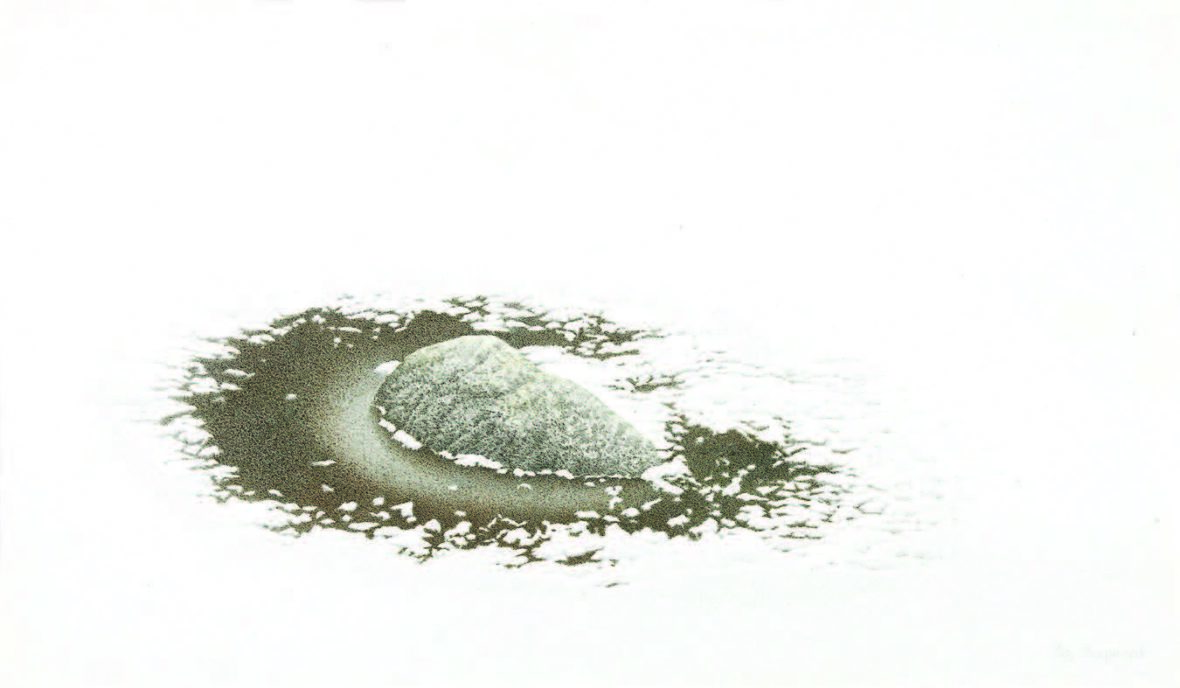Liz Shepherd
East-West: Two Streams Merging
Artist Statement
Liz Shepherd’s works included in East-West: Two Streams Merging shown at the Schneider Museum of Art poetically represent nature as both a place of meditation and mystery. Her work can be extraordinarily detailed, as in Welcoming Willow, or serenely minimal, as in Two Mountains. Yet, there is a stylistic quality that ties her evolving styles together emerging from her East Asian aesthetic influences and her devotion to her work. Transposed into the Southern Oregon setting, her practice of representing the same place in multiple evolving ways recalls Georgia O’Keefe in equal measure with the Eastern painting practices through which she was trained. Ultimately, this collection of works by Shepherd exhibits her unique ability to use her Eastern influences to look at her environment in Southern Oregon in a manner resembling both the minimal works of Toba Khedoori and the detailed landscapes of Japanese watercolor artists like Hiroshi Yoshida.
Shepherd’s paintings convey a stillness and silence. The ambient space she creates is a direct result of her process-oriented approach to her work, her knowledge of materials, and her training in Eastern art practices. Shepherd explains “as the work got more minimal, it felt like physical subjects were almost an intrusion to what I was trying to convey.” Shepherd’s work is much more than illustrations of space—the gestural elements of her work and her process-oriented techniques grant these landscapes an emotional, transcendent center. Shepherd explains that her favorite painter is Mark Rothko, whose works may seem very different from hers at first. However, the works of both artists make use of a sublimity made through the minimal that allows for the viewer to immediately be sucked in and transfixed. Technical knowledge of an artist like Liz Shepherd adds detail and background, but is ultimately secondary to the wondrous spaces she creates on the paper.
Artist Bio
Shepherd describes the body of work comprising East-West: Two Streams Merging as her “mature” period. Her training is extensive—a Bachelor of Arts degree from Camberwell School of Art, three years of Japanese calligraphy with Keiko Watanabe, nearly 20 years of sumi-e, calligraphy, ikebana, and tea ceremony studies with Shozo Sato—it’s safe to say that Shepherd’s background is thorough. And this studious background shows in her work—in each work on view, one can tell that Shepherd has meticulously chosen medium, paper, and brush to most naturally match her subject. Shepherd’s devotion to painting is immediately apparent. She approaches each kind of watercolor in her repertoire with academic curiosity. Yet, the manner by which she applies the paint is quite minimal and natural. Two Mountains, for instance, is two simple brushstrokes of Lapis Lazuli on Arches Paper. Shepherd’s studies of paint and its properties have awarded her a freedom in her work.







